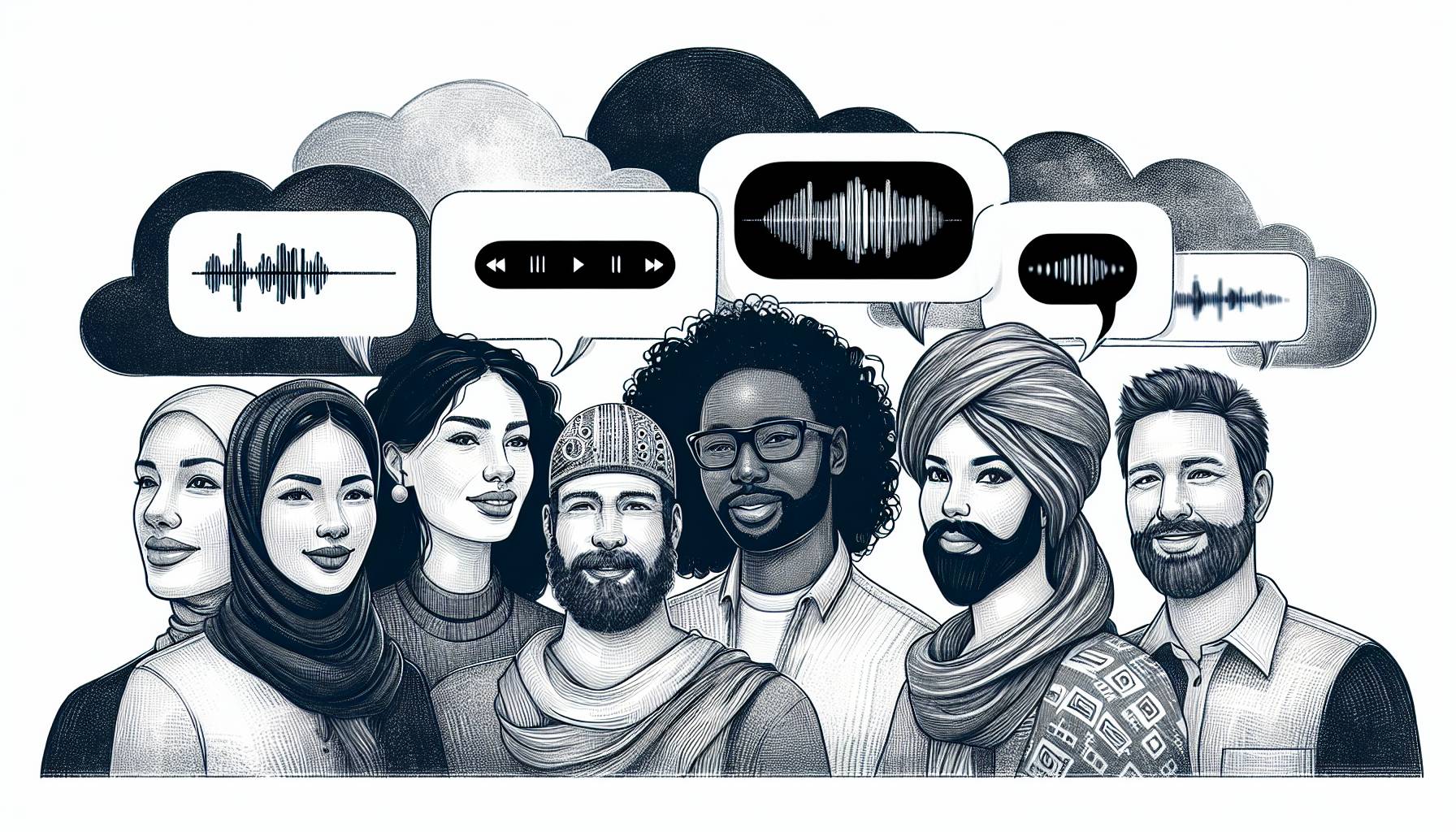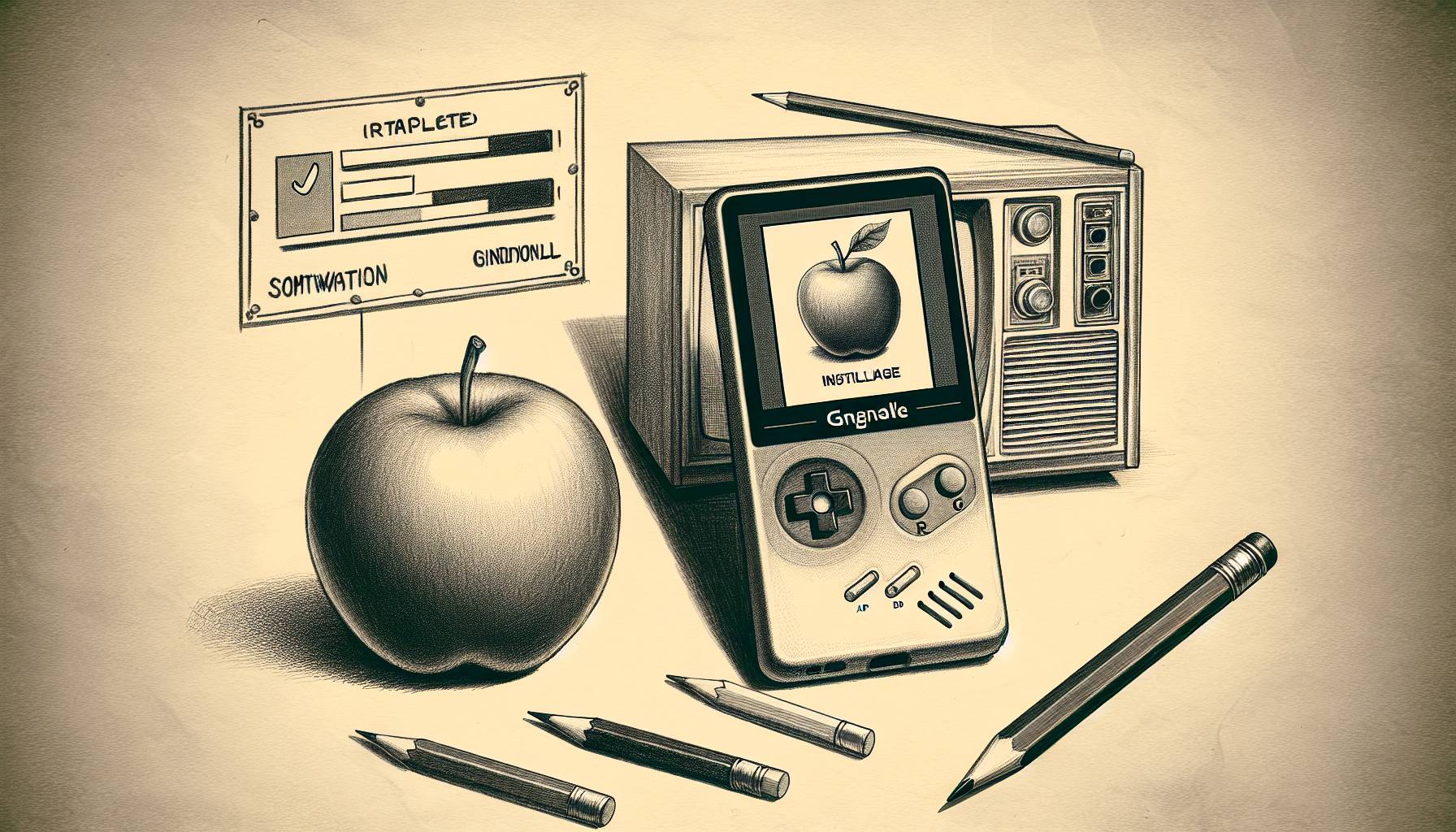TV is hot and getting hotter. Big screen stars woo, instead of scorn it, and after a glut of low-cost reality shows late last and early this millennium that caused a dearth of quality programming, the last few years have seen new, smaller networks like USA, AMC, and SyFy, along with reinvigorated cable giants like HBO and Showtime sending a steady stream of superlative TV our way. As we anticipate the fall premieres of Boardwalk Empire, American Horror Story, Sons of Anarchy and Dexter, television companion apps that integrate social network feeds with exclusive features and perks, known as social TV or “second screen” apps have been updating with all kinds of new goodies in time for the big fall TV premieres.
Why? Because despite evoking images of socially isolated, over-snacked, couch-locked tubers, TV is and always has been a social activity. Whether it was families congregating around a home’s single set to watch the Honeymooners, The Ed Sullivan Show or All In The Family, or workplace water cooler and school lunchroom chatter about last night’s episode of Cheers, The Simpsons or American Idol the 20th century was both shaped and dominated by television. Elections have been won (or more aptly lost) lost because of it and news events – even those we weren’t alive to witness – are seared into our collective unconscious. All the while people have been passively consuming a steady diet of advertising allowing the medium to dominate not only what talk about, but where and how we spend our money.
That was then. Today TV faces new competition. Millions of us still tune-in as evidenced by the ever-multiplying stream of cable, satellite and Internet outlets, but we’re distracted by what those in the tech and entertainment industries call “second screens”. What does that mean? A 2011 whitepaper by Yahoo! and Nielsen shows that up to 86 percent of viewers with smartphones use them while simultaneously looking at their “first” LED, plasma or LCD television during commercials and while the show is on. And that percentage is even bigger for tablets.
What are we all doing? Until now, mostly checking our email, but that is changing rapidly. With the growing mainstream acceptance of social sites like Twitter, what many viewers are up to is engaging in a virtual, real-time global conversation. Be wary of writing this off as a youth fad. Almost 60 percent of those tweeting and Facebooking while watching are between the ages of 25-49. I say “we,” because I am a part of that demographic and increasingly see tech-shy friends joining the conversation.
This presents an incredible opportunity for both the entertainment industry and app developers to capitalize on all those roaming eyeballs. They’ve been trying for several years now, but 2012 seems to be their time to proliferate and garner media attention. As summer shows (a lovely new trend replacing reruns) wrap up, and networks queue up their fall line-ups we’re seeing loads of interesting interface updates.
That said, none of the current big players have found a way to fully monetize the experience, or even add much user value beyond that which can be found on social sites. To succeed long-term, second screen apps have to do more than just provide access to social feeds and games; iPhones and iPads have enough games and direct access to social networks already. To win user loyalty and offer advertisers something tangible, the apps need to do two things: drive user engagement beyond the Twitterverse, and capitalize, rather than lose, viewer attention during commercials.
Let’s look at some of the best of what’s available for American iOS viewers now, and what we can hope to see in the future that will add value for everyone involved.
TV Discovery Apps
Last week I discussed the future of iPad magazines and pointed to the discovery model found in custom radio apps like Pandora and Slacker. TV apps that offer discovery are important too. With so many sources these apps help us weed through the muck to find lesser-known gems with buzz like the UK’s Downton Abbey, Misfits and Sherlock.
While directly monetizing discovery is harder with second screen apps than with first screen content delivery, served directly by apps like Netflix and Hulu Plus or secondarily by apps like Fanhattan and Crackle Movies & TV which shunt users to services where they can watch content on their iPhone or iPad, there is still demand for them. They are the modern-day equivalent to TV Guide magazine or the print inserts that used to come with the weekend edition of local newspapers back in the day. The best of these apps allow you to indicate your TV provider and location via zip code or GPS so they provide accurate customized listings.
Peel Personalized TV Experience
Peel’s app works with hardware that can turn your iPhone into a remote control, but with the recent update to version 2.0 it also offers a lot of value as a stand-alone app. Peel uses the same sort of AI that news aggregators do to learn your viewing preferences. Shows can be liked, disliked or filed under headings like “guilty pleasures” and you can tell the app about your general viewing preference including preferred genres. The more feedback your give the app, the better it gets at predicting your taste and it uses your social graph to help you discover what friends are watching.
While mostly a guide and discovery tool, Peel did something with American Idol last year that added some show-specific value. Through their “Interactive Idol Experience” they allowed the audience to “cheer” or “boo” contestants. Scott Ellis, Peel’s VP of marketing told Mashable, “We think we’re still just in the first inning here as far as what social TV is capable of” suggesting we can expect more show-specific tie-ins in the future.
TV Guide Mobile
TV Guide Mobile just updated to include a “watchlist.” This is a big move into the second screen arena for the old-school print guide, and one its app needed sorely to stay relevant. As GigaOM reports, the company faces a big hurdle, not wanting to lose its core readership with too many features, but needing to reinvent itself, like all periodicals, to provide a pleasant digital experience for its core demographic. Watchlist allows you check into shows like GetGlue does (see below) and has some rudimentary social sharing, but EVP and GM of TVGuide.com and TV Guide Mobile, Christy Tanner explains that “news is our [primary] social feature” much like in the print version.
Other interesting TV discovery apps worth checking out include BuddyTV Guide, i.TV and Matcha.
TV check-in apps
Discovery, on its own, only goes so far. Users and providers (and their advertisers by extension) want more than just a list of what’s on, however interactive. Viewers always want more of everything – more clips, more teasers, more trailers, more behind-the-scenes access, even the opportunity to see how the cast of our favorite shows are reacting. And, we want to share our own opinions and display our taste profiles in public as yet another way of crafting our online personas. At the same time, providers want to know who’s watching and tailor both viewing experience and advertising to capture the trend or chatter of the moment.
There are two different types of apps that provide this sort of engagement. There are general TV check-in services that aren’t tied to a provider, network or show, and there are provider, network and show-specific apps. While they both have benefits and drawbacks, my favorites, and those that get the most traction and press are independent of specific affiliation. They all provide discovery, social network integration, and most have integrated iOS alerts.
GetGlue
GetGlue is the big name, with a website that’s been around for a while. The service is not TV-specific. It was fashioned after the Foursquare model, but intended for those of us who aren’t hipsters likely to earn badges much less mayorships at hot new clubs or coffee shops. The website, iPhone app and until recently the iPad app allow you to check-in to TV shows and movies, and also video games, books, music and even topics you’re thinking about. Doing so earns stickers, both virtual, and – if you use accrue enough of them – physical ones mailed to your door. Who wants these stickers? Apparently, millions of users – three million at least according to TUAW. The app rewards loyalty by giving out fan, super fan and extreme fan rewards for multiple check-ins to the same activity and a smattering of other surprise stickers you can earn by, for example, taking too long with a novel or being a media junkie and checking-in to several activities in one day.
You can also become a “guru” by engaging others with your pithy comments on a movie or TV show or with an erudite literary review. I started using the service to write about it, but confess that earning even silly virtual stickers (I ordered physical stickers for my son over two months ago but they have yet to arrive), earning “guru” status, and engaging with a dedicated community of media junkies is addictive.
GetGlue is streamlining, however, and just revamped its iPad app to reflect the fact that TV is what users really can’t get enough of. In version 3.0, everything is gone except for movies and TV check-ins, but now there is a visual guide to what’s on tailored to your provider, along with special information like stats on sports, along with video clips and much more social network integration.
I miss checking-in to books and music, and find the new interface a bit cluttered, but I get it. TV’s repetitive nature lends itself better to frequent check-ins than movies or books since they come out weekly or daily. And GetGlue pairs with the biggest networks to offer special stickers that fans really want. Summer hits True Blood, Louis, Breaking Bad, and So You Think You Can Dance (among many others) all gave fans special stickers to post on Facebook, Tumblr and so on for checking-in during the actual prime time broadcast.
GetGlue also works out deals with publications like Entertainment Weekly that reward users for checking-in to shows they picked as hot, and even lets you “level-up.” They did something similar with NBC this summer during the 2012 Summer Olympics not only rewarding viewers for watching specific events, but giving all around medal-badges in Olympic bronze, silver and gold for checking-in to various high-profile events and the opening and closing ceremonies. I don’t have access to their stats, but based on the premium partnership, these rewards must have monetary payoff for providers.
GetGlue has also successfully worked with retailers. The Gap sponsored an engagement promotion last year rewarding users who checked in to EW’s picks. Those lucky viewers unlocked virtual sticker that that acted as up to 40 percent off in-store coupons.
IntoNow
Yahoo! bought IntoNow shortly after it launched. The iPad app uses Shazam-like magic to identify shows from audio fingerprints and then serves up information on the specific episode viewers are watching. It works for live TV and has years of archived content from 130 channels allowing it to identify reruns viewed on Netflix and Hulu Plus, or those rented from Apple or Amazon Instant Video, not to mention everything stored on your PVR.
Speaking to Forbes in January, Into-Now’s Adam Cahan explains that the key benefit to the sound printing is that it “surface[es] highly relevant content. That could be content related to the show on TV, social information of what friends are watching, or loyalty rewards for watching certain programs.”
The app already had discovery and social network integration, but its most recent update to version 3.0 added some out-of-the-box elements I reported on previously. I enjoy the new trivia challenges and private group chats, but the Capits feature – the ability to freeze a moment in a show, add captions to it, Internet meme-style, and share it – really has me straining (and occasionally breaking) my funny bone.
While Capits and better chat are great ways to keep viewers engaged it looks like Into_Now is going further with an eye towards monetizing the loyalty it engenders. Assuming you are watching the episode with commercials (and if you aren’t, you’ll have to wait for the app to catch up) special offers to viewers in real-time is expected, and has tremendous potential.
Miso – Social TV
Miso – Social TV started as a simple check-in app, but they have gone in a completely different direction from everyone else when it comes to engaging users with “SideShows.” While others focus on how best to use Twitter feeds or to create their own second screen content, Miso targets users by letting them become a part of content creation. Miso encourages viewers to make mini-blogs to accompany a show. When displaying the demo to Adweek, a product manager showcased a user-created fashion show meant to accompany an episode of Gossip Girl (returning to the CW in October) as a great example of how the app can be used to encourage participation among tech-savvy audiences.
Obviously aiming at a younger crowd, and speaking to how we use our social graph to create an impression of ourselves that we want to show off, Miso’s CEO Somrat Niyogi explains. “People don’t want to list everything they watch – it is not cool. You only want to share things that makes you look cool.” Making your own potentially viral SideShow is pretty cool, indeed. And, as CNN Money reports, Miso is also beta-testing sound finger-printing and teaming up with providers like AT&T U-Verse and DirecTV so that their customers can sync the app with their set-top boxes. Ad placement in SideShows is being offered for sale to networks and directly to advertisers to increase profits.
Failures and successes
Umami
As these services mature, we are beginning to weed out winners and losers. Umami had a highly regarded Shazam-like second screen iPad app that they pulled from the App Store when its Beta test “ended” several months ago. The developers promised that the app would be back soon incorporating their test findings, but there has been no word on the now static website to indicate when, or even if they will be returning to the App Store at all.
Zeebox
On the other hand, a UK app called Zeebox is rumoured to be coming to the U.S. soon on the heels of great success using “Zeetags” (think hashtags) and a click-to-buy function. The app enables viewers to find out more information on products that are being advertised; a tap takes consumers to the brand’s website or an online retailer. Zeebox’s CEO Anthony Rose suggests: “By moving this functionality to your smartphone or tablet, and delivering an experience that is synchronized to the show you’re watching on TV, we think that Zeebox finally delivers on that magical click-to-buy promise.”
Viggle
VentureBeat took a look at Viggle because they have “an emerging” loyalty program which rewards viewers for watching live TV (with commercials of course) with points and rewards that can be used for real-world purchases at retailers like Old Navy and Starbucks. The app provides viewers with ”contextually-relevant material” like games, contests and coupons, which helps keep users engaged during crucial for-profit commercial airtime.
Network and single show apps
I can’t look at apps from providers here, but while general check-in apps get most of the press these days, there are still an abundance of network and single show apps. Most are lackluster, but there are a few standouts.
MTV Networks
MTV Networks has MTV WatchWith and VH1 Co-Star both of which offer great user experiences for fans of shows on their ever less music-themed networks. Fast Company ran a wonderful three-part series on second screen apps and spoke with Dermot McCormack, executive vice president of digital media for the MTV Networks Music & Logo Group who makes the argument for networks (or shows) maintaining control over the second screen experience. To parse it, networks seek to integrate the social chatter with exclusive perks.
“Nobody else sitting outside of our ecosystem knows when that key moment in the VMAs is or the key moment in Mob Wives is. We want to create experiences that leverage the fact that we have the script”
Networks can do things general services can’t, like arrange for stars to make cameo in-app appearances, make sure cast-member tweets get attention, or offer background character stories that are available in-app only.
HBO has a great companion app, but it isn’t social. You can find the social component in USA Anywhere, SyFy and SyFy for iPad (owned by NBC), Showtime Social, AMC Mobile, and apps for many other broadcast, cable and premium channels in the App Store, but note that most get poor user ratings.
Single Show Apps
There are some fun single show apps, particularly from Showtime. These have the same potential advantages as network apps, and can give viewers and advertisers an even more targeted experience. They aren’t a practical general solution for people who watch more than one or two shows, though, and it can be hard to discern which apps are officially licensed and which just prey on fans without offering any value whatsoever, much less second screen worth.
Weeds and Dexter
Showtime’s Weeds draws to a close next week, but will live on in marijuana sub-culture not to mention on Netflix and in syndication. Their app has lots of clips, guides and the ever-popular “Know Your Grow” trivia game. The Weeds on Showtime app can function as a first screen for those with participating provider credentials, (much like HBO offers in HBO Go and Max Go for Cinemax) and has social integration along with music from the show and even fan podcasts. Coming back September 30th, Dexter, also from Showtime, has also a great dedicated app with the same basic features. These are iPhone-only, but free and well received.
Wrap up and forward glance
A Viacom survey found 56 percent of respondents (with smartphones or tablets) use social TV apps. This reinforces the Yahoo!/Neilson and general industry findings that viewers are going to engage with whatever other screens they have while watching TV. 2011 witnessed the emergence of second screen apps on iPad and 2012 has been a year of innovation. As we tune in through fall we will continue to see advertisers, networks and third parties refine their approaches to both engaging viewers and monetizing the second, and even third, screens in viewers’ hands. Next year will determine which of the current players and models have staying power, and what, exactly, ubiquitous but enigmatic TV audiences want to see in their 2013 second screen line-ups.












